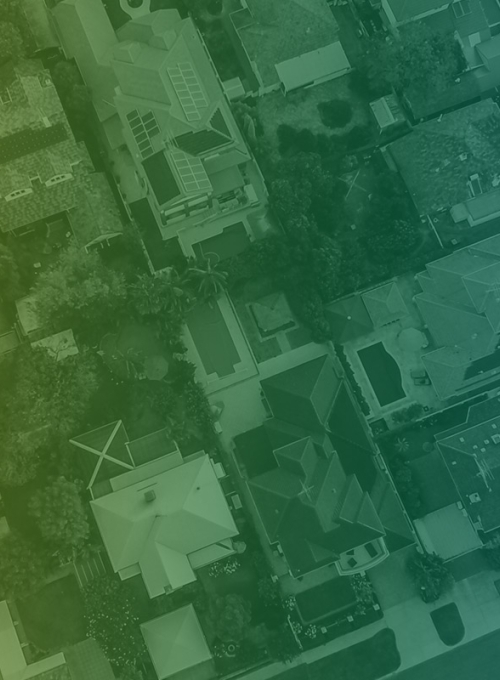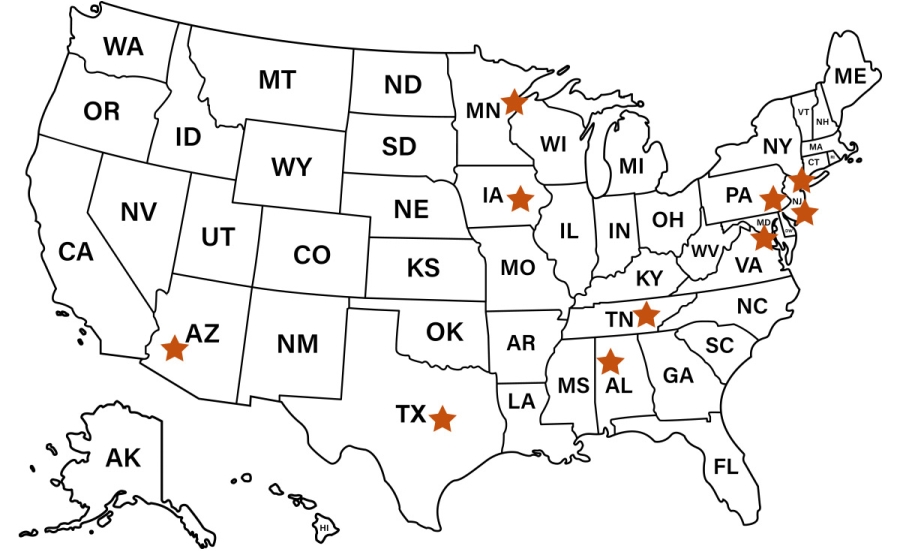
COPEWELL in Practice
COPEWELL Communities
In this section, we highlight the efforts of eight teams who have taken all or individual components of COPEWELL and applied them to their work. This section aims to show COPEWELL in action, highlighting how the materials on the website can be used to meet the specific needs of a community. Adaptability is at the heart of any useful tool; these case studies highlight the wide range of applications that COPEWELL and its materials offer.

- Chester County, Pennsylvania
Located in southeastern Pennsylvania, Chester County includes 759 square miles, 73 municipalities, and roughly 535,000 residents. Well-resourced, the county nonetheless has pockets of economic distress and uneven access. In collaboration with the COPEWELL developers, the community resilience coordinator with county’s Department of Emergency Services used the COPEWELL framework and computational model, as part of a friendly campaign to create more coherence among diverse efforts focused on community well-being and disaster preparedness and response. As part of the development process for the COPEWELL rubric, the resilience coordinator also convened county and municipal partners, nonprofits, and utilities to rate county capacity around social capital and cohesion (SCC), stimulate ideas about how to strengthen it, and identify priorities and players for doing the work. A follow-on activity was a SCC self-assessment workshop convened in an under-resourced municipality, where residents rated the town’s ability to pull together as a community and identified what actions people could take to strengthen everyday neighborliness and community participation.
- Twin Ports: Duluth, Minnesota and Superior, Wisconsin
At the western edge of Lake Superior, the Twin Ports (pop. 290,000) is a metropolitan area that encompasses Duluth, MN and Superior, WI. Ready North is a collection of agencies and resources to support the Twin Ports community in preparing for, responding to, and recovering from a disaster, with an emphasis upon marginalized populations. A founding member, the Duluth Superior Area Community Foundation (DSACF), used COPEWELL to mobilize Ready North’s nascent membership around a common mission and strategize how to improve regional resilience. In turn, the COPEWELL team learned from the Twin Ports community how to make their tools more user-friendly. To get people initially talking, DSACF compared the community functioning (CF) of Douglas and St. Louis Counties with other counties to identify strengths and shortfalls. Using the CF rubric content as a guide, the DSACF also surveyed Ready North member organizations and gathered local data to inform resilience efforts further. Lastly, the DSACF convened an in-person workshop to elicit more qualitative data about the area’s CF. Triangulating these 3 data streams, DSACF and Ready North found recurrent concerns, around which to begin developing an action plan.
- Linn County, Iowa
Linn County is located in East Central Iowa and is the second most populous county in the state with more than 229,000 residents. Linn County has 18 incorporated communities and eight villages. Representatives from Linn County, Iowa launched the Linn County Community Resilience Project after experiencing a damaging derecho in 2020. With the use of an external facilitator well familiar with the county, the project aimed to gather lessons learned from the emergency event and start discussions on how to be more resilient to future natural disasters.
For this project, COPEWELL served as a resource that guided conversations on resilience and response. Organizers used COPEWELL materials to bring stakeholders together and to serve as an objective resource and framework that reduced blaming and finger-pointing during difficult conversations. The experience of Linn County exemplifies how COPEWELL can be used to bring people together and facilitate action-oriented, constructive conversations.
- Maryland Department of Emergency Management
The Maryland Department of Emergency Management (MDEM) found COPEWELL to be a valuable suite of tools for building resilience. MDEM found that the COPEWELL computational model and self-assessment rubrics could be useful for informing resource prioritization by the state to local entities looking for support for resilience projects. MDEM also found that the COPEWELL conceptual model was helpful in identifying ways to define and assess the concept of resilience. Multiple MDEM suggested improvements to the COPEWELL website and tools were implemented by the COPEWELL team, including a resource listing federal grants and other funding opportunities where COPEWELL could be useful as well as a “getting started guide” to help walk users through learning about COPEWELL step-by-step.
- Austin and Travis Counties, Texas
The Capital Area Council of Governments (CAPCOG) gathers representatives from a 10-county region surrounding Texas’ capital city, population 2,407,031. CAPCOG consists of more than 90 member governments and organizations that represent the people of Bastrop, Blanco, Burnet, Caldwell, Fayette, Hays, Lee, Llano, Travis, and Williamson counties.
A representative working with the CAPCOG (in this situation, a facilitator identified through a local university partnership) used COPEWELL to spark discussion around pre-disaster planning and an expanding definition of community. While working with COPEWELL, this representative developed a crosswalk that showed potential ways that COPEWELL and regional THYRA requirements could overlap. The team members also explored what regional non-governmental organizations and community-based organizations could be evolved in building resilience. To expand awareness and utilization of COPEWELL in Texas, the representative is also working with a university-based community resilience research center to host a town hall for local emergency management, advocacy groups, and the public health sector.
- The Tennessee Department of Health
Emergency preparedness staff in the Tennessee Department of Health looking for specific tools to supplement and meet the requirements of jurisdictional risk assessments. Staff were drawn to the COPEWELL model because of the quantitative strength of its computational model and the ability to gauge qualitative information through the self-assessment materials. In particular, the COPEWELL rubric on population vulnerability, inequality, and deprivation was a valuable resource to gather more information for the risk assessment. Use of the COPEWELL suite of tools is still ongoing in the jurisdiction with efforts to conduct workshops with local stakeholders and surveys developed by modifying COPEWELL rubrics.
- The University of Alabama
In the summer of 2022, a team of social scientists and public health researchers – from the University of Alabama in Tuscaloosa (“Team Alabama”) – adapted the self-assessment portions of COPEWELL to advance their work in connection with community health workers in the Black Belt region of the state. The team was a part of CommuniVax – a national rapid research effort to support an equitable and effective COVID-19 vaccine rollout in the United States, in partnership with local Hispanic/Latino and Black/African American communities. Recognizing that a community-based workforce was critical for achieving COVID-19 vaccine equity, and the ongoing health and wellbeing of underserved populations, Team Alabama expanded their mission to helping stand up and strengthen a sustainably financed community health sector. A first step was establishing a baseline of the infrastructure (currently scattered and siloed) and socializing the idea among potential partners of forming a coalition. By adapting select COPEWELL rubrics, Team Alabama was able quickly and efficiently to devise an introductory needs assessment instrument by focusing first on the stakeholder’s expertise: the community they served (health and wellbeing) or their role in crafting an organizational or institutional response to public health concerns (countermeasures).
- New Jersey Voluntary Organizations Active in Disaster (NJVOAD)
NJVOAD represents a statewide group of organizations, including the American Red Cross, the Community Foodbank of New Jersey and others, that work in disaster response and recovery. They support various local communities working to strengthen their response and recovery efforts. Representatives from NJVOAD have used COPEWELL materials in different ways in different communities, tailoring it to meet local needs.
With one Long Term Recovery Group, NJ VOAD shared local Community Functioning and Population Demographic indicator data with the group to help them more fully understand who was in their community and how to reach them. With another, an emerging group of concerned citizens interested in community development used the COPEWELL framework to more fully understand the relationship between resilience and community functioning and used the COPEWELL Community Functioning rubric, specifically the “Low” and “Optimal” Community Functioning descriptions, to identify ways their community could be strengthened. In a third community, a local citizen is exploring use of COPEWELL-based conversations as one strategy for re-engaging members of their local Community Organizations Active in Disaster (COAD) as they continue to recover from Hurricane Ida. Other potential uses include use of the self-assessment rubrics and facilitator guide to create a pre-meeting survey and to help organize the structure of their meetings.
- New York City Department of Health and Mental Hygiene
New York City was an early partner in the development of COPEWELL. Joining in shortly after the model’s initial development, the New York City (NYC) Department of Health and Mental Hygiene (DOHMH), Office of Emergency Preparedness and Response formed an interagency COPEWELL-NYC team to explore the COPEWELL model, provide feedback on applied uses and value, discuss potential indicators of community functioning and resilience for the computational model, and to identify locally relevant uses for the model. This working group included DOHMH staff representatives across agency divisions (Emergency Preparedness and Response, Environmental Health, Mental Hygiene, Prevention and Primary Care, and Health Equity) as well as representatives from NYC community-based organizations (CBOs) and other community liaisons. The team used the COPEWELL model to guide internal and external discussions of community resilience, to help frame and prioritize additional data collection, and to aid in identifying and planning resilience-strengthening efforts. They found the model helped cross sector partners better understand resilience and how the work they undertook everyday contributed to the same. In addition, in combination with response experience, it was used to identify communities at high need for further resiliency building efforts, to spark ideas and partnerships for specific resiliency building initiatives, and to advance leadership support for the same. Their early work with the COPEWELL development team was one of the key sparks helping developers move beyond a solely computational model approach. This and other experiences led to the addition of the rubric-based community self-assessment tools, thereby increasing both COPEWELL’s usefulness and geoscale applicability.
- Arizona Department of Health Services
The Arizona Department of Health Services (ADHS) is working with COPEWELL to enhance public health assessment and vulnerability analysis initiatives. The ADHS Office of Health Equity is integrating COPEWELL with state health outcome data, real-time emergency information, and geographical social vulnerability indicators to triangulate actionable preparedness planning and target resilience enhancing opportunities. Use of the COPEWELL framework has helped ADHS effectively gather stakeholder and community partners around data to establish dialogue and sharing about critical issues facing local communities and identify the public health priorities of local communities. COPEWELL is helping to guide partners toward situational awareness and a common operating picture that allows communities to address gaps and rapidly link to grant and funding opportunities aligned with needs.
